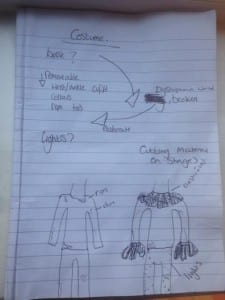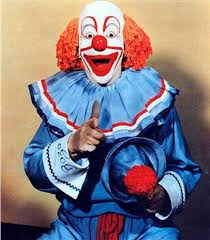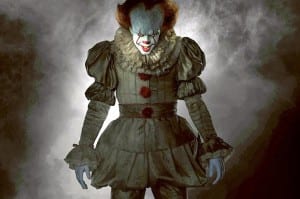The final performance of If An Orchid Was All You Had went fantastically well in my opinion; working on this performance has been a whirlwind of creativity.
The final costumes had colours added to them with the same spray paint used on the set. This last minuet addition tied the set and costume together beautifully, along side the make-up which also complimented both other aspects.
We stuck with the same notion of “showing the stitches” as mentioned in my previous post Making the Costumes, an idea which bled out into the rest of the performance. Initially we had wanted the tech box in full view however for practicality reasons we had to resort to it being off stage. However, as a company we did not want to hide the seams of our performance and so the tech box could still be viewed by the audience, just not as clearly as we had first planned. We also had to compromise the logic of our play in parts for logistical reasons in that a few of our entrances and exits of The Creatures had to be away from the tree. Our earlier discussion dictated that The Creatures should only enter from the tree but that was simply not possible for our final performance.









 (New Line Cinema, 2017)
(New Line Cinema, 2017)